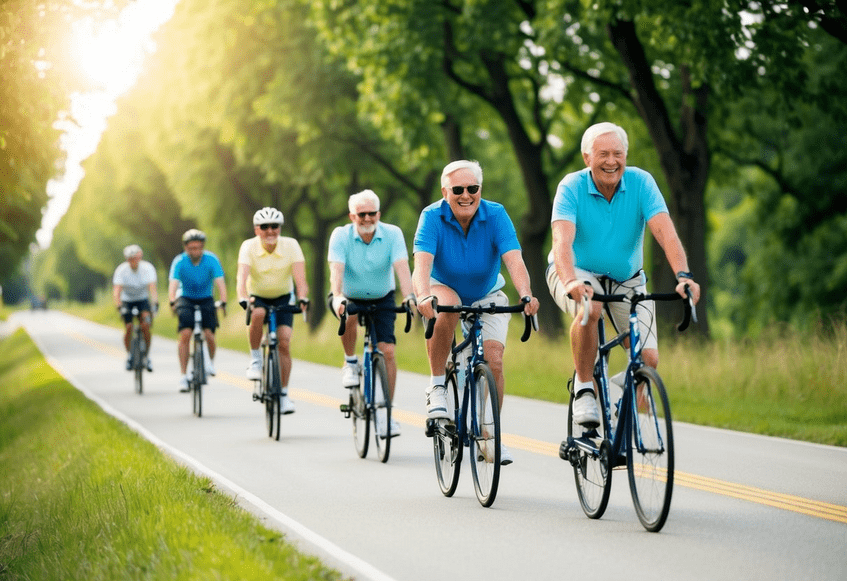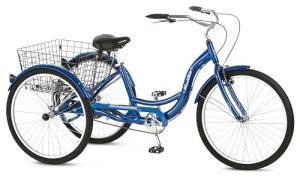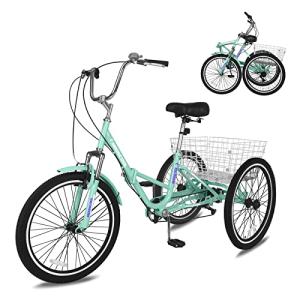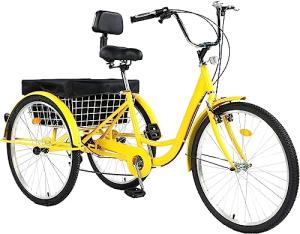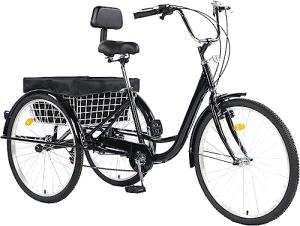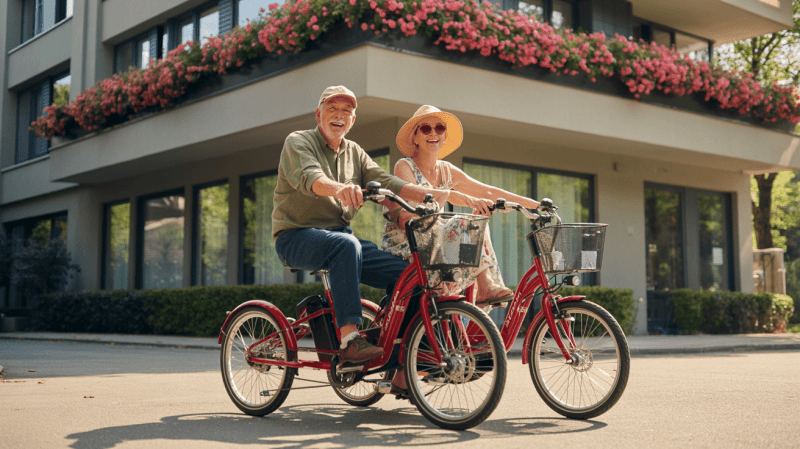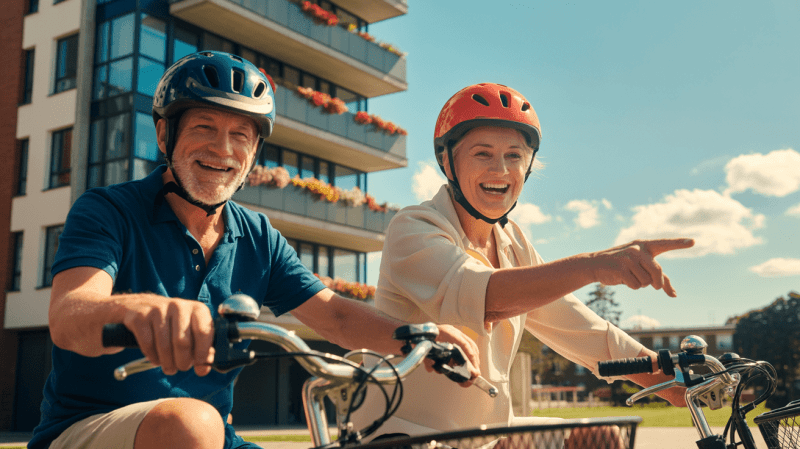Cycling offers a wealth of benefits for seniors, enhancing both physical and mental well-being. Many elderly cyclists find joy and fitness in this activity, experiencing improvements in strength, balance, and cardiovascular health. Regular cycling not only promotes a healthy lifestyle but also fosters social connections and a greater sense of independence.

For seniors, choosing the right equipment and understanding essential cycling nutrition can make all the difference. Properly selected bikes and safety gear ensure a comfortable ride, while mindful nutrition supports sustained energy levels. This accessibility empowers senior cyclists to embrace the open road confidently and safely.
Engaging in cycling can be a family activity that nurtures bonds while promoting fitness. Whether enjoyed solo or with loved ones, cycling creates opportunities for lasting memories.
Key Takeaways
- Cycling significantly boosts physical and mental health for seniors.
- Proper equipment and nutrition are key to a safe, enjoyable experience.
- Family involvement enhances the joy and benefits of cycling.
Advantages of Cycling for Seniors

Cycling offers numerous benefits for seniors aimed at improving health and well-being. From enhancing physical fitness to boosting mental health and fostering social connections, it plays a crucial role in maintaining an active lifestyle during retirement.
Improving Physical Health
Regular cycling provides vital cardiovascular exercise, which helps strengthen the heart and improve circulation. This activity can lower blood pressure and cholesterol levels, reducing the risk of heart disease.
Additionally, cycling is a low-impact exercise. This means it is gentle on the joints, making it suitable for seniors who may have arthritis or other joint issues. It helps enhance muscle strength and endurance without causing excessive strain.
Cycling can also benefit seniors by improving their balance and coordination. As they navigate their bikes, it promotes better agility, which can help prevent falls—an important consideration as they age.
Enhancing Mental Well-being
Cycling is not only good for the body; it also positively impacts mental health. Engaging in this activity can help reduce symptoms of anxiety and depression. The release of endorphins during exercise contributes to a sense of happiness and well-being.
Moreover, cycling encourages mindfulness. Being outdoors and focusing on the ride allows seniors to enjoy the scenery and take a break from daily stress. This can lead to improved feelings of relaxation.
Studies show that regular physical activity like cycling can also enhance cognitive function. This is particularly important for seniors, as it may help lower the risk of cognitive decline and keep the mind sharp.
Social Benefits and Community Engagement
Cycling often provides opportunities for social interaction. Many seniors join cycling clubs or groups, which leads to friendships and a sense of belonging. Participating in group rides enables them to share experiences and create lasting bonds.
Joining local cycling events or community rides fosters a sense of connection. This can boost feelings of happiness and reduce loneliness, which is crucial for mental health in retirement.
Additionally, these social engagements may encourage a more active lifestyle overall. As seniors meet others who enjoy cycling, they are more likely to stay motivated and continue riding regularly.
Essential Cycling Nutrition

Proper nutrition is vital for senior cyclists to enhance performance and recovery. Focusing on hydration, meal timing, and recovery foods helps maintain energy levels and supports overall health.
Hydration and Electrolytes
Staying hydrated is crucial for cycling, especially for seniors. Proper hydration enhances endurance and prevents fatigue. It's recommended to drink water regularly before, during, and after rides.
Electrolytes like sodium, potassium, and magnesium are important for muscle function. Seniors should consider electrolyte drinks during long rides to replenish what is lost through sweat.
A good rule is to drink 16-20 ounces of fluid two hours before cycling. During rides longer than an hour, aim for 7-10 ounces of fluid every 10-20 minutes. This helps maintain hydration levels.
Optimal Meals for Energy
Meals before cycling should focus on carbohydrates for quick energy. Foods like oatmeal, whole grain toast, or fruits are great options. These provide essential fuel without feeling too heavy.
Additionally, protein in meals helps with muscle repair. Combining carbohydrates and protein in a meal is ideal. For example, yogurt with fruit or a turkey sandwich can offer balanced nutrition.
Eating about two to three hours before cycling allows enough time for digestion. If riding early in the morning, a light snack, such as a banana or a small energy bar, can boost the needed.
Recovery Foods Post-Ride
Recovery nutrition is key to helping the body heal and regain energy after rides. It is ideal to consume a meal with protein and carbohydrates within 30-60 minutes.
Good recovery options include smoothies with protein powder, a chicken wrap, or a quinoa salad. These meals help replenish glycogen stores and repair muscles.
In addition to solid foods, hydration remains important. Drinking water or an electrolyte beverage can accelerate recovery. Balancing nutrients post-ride supports better performance in future rides and overall health.
Choosing the Right Equipment

Selecting the right equipment is essential for safe and enjoyable cycling. This includes finding suitable tricycles, bike helmets, and features that enhance the riding experience for seniors.
Selecting the Best Senior Tricycles
When looking for the best senior tricycles, comfort and stability are critical. Tricycles with a low step-through frame make it easy to get on and off. Also, models with adjustable seats allow for a customized fit to enhance comfort during long rides.
A few recommended brands include Schwinn, which offers sturdy designs, and the Viribus Electric Trike, known for its electric assist features. Focus on tricycles with wide tires for better balance and a smooth ride. Consider models with multiple gears to handle different terrains easily and make rides more enjoyable.
Finding the Best Bike Helmets for Seniors
Choosing the right helmet is crucial for safety. Seniors should look for lightweight helmets that provide good protection without adding extra strain on the neck. Look for features such as adjustable straps and padding for a snug fit.
Additionally, helmets with good ventilation keep the head cool, which is important for comfort. Brands like Giro and Bell offer various options with these features. Many helmets also have built-in lights for visibility, especially when cycling in low light.
Viribus Electric Trike Features
The Viribus Electric Trike is designed for senior riders. One standout feature is its electric assistance, which makes pedaling easier, especially on hills or longer distances. This benefits those who may not have the stamina for traditional cycling.
The trike also includes a large rear basket, which is practical for carrying groceries or personal items. Its battery can cover significant distances on a single charge, providing convenience and confidence. The trike’s sturdy construction also helps ensure safety and comfort during rides, making it an excellent option for seniors.
Family Cycling Dynamics

Family cycling brings together different generations, promoting both fitness and bonding. Understanding how to incorporate cycling into family activities and selecting suitable bikes can enhance the experience for everyone involved.
Incorporating Cycling Into Family Activities
Adding cycling to family outings can be both fun and healthy. Families can plan regular bike rides in local parks or along scenic trails. This builds exercise into their routine and quality time spent together.
Consider organizing weekend family cycling events. These can include picnics where everyone rides to a destination, or even short races for older children.
To keep everyone engaged, choose safe and suitable routes for all ages. Mixing activities, like stopping to explore nature or visit points of interest along the way, keeps the experience exciting.
Selecting Bikes for Multi-Generational Rides
Choosing the right bikes is crucial for enjoyable family rides. The type of bikes selected should be dictated by different ages and skill levels.
For seniors, comfort is key. Look for bikes with step-through frames and wider seats. Electric bikes can also be a great option, providing extra assistance on longer rides.
Kids may need smaller, lighter bikes or balance bikes to help them feel confident. Adjustable seats are important for growing children. Hybrid bikes offer versatility, allowing family members to easily ride on various terrains.
Safety gear, like helmets and knee pads, is essential regardless of age. This ensures everyone enjoys cycling while reducing the risk of injuries.
Safety and Accessibility in Cycling

Ensuring safety and accessibility is crucial for senior cyclists. With the right tips, adapted bicycles, and careful route planning, seniors can enjoy their rides while minimizing risks.
Tips for Safe Rides
Safety is the top priority for senior cyclists. Here are key tips to enhance safety during rides:
- Wear a Helmet: Always wear a properly fitted helmet to protect against head injuries.
- Use Lights and Reflectors: Equip the bike with front and rear lights, especially for evening rides. Reflectors increase visibility, making it easier for others to see them.
- Stay Aware of Surroundings: Keeping an eye on the surroundings helps to avoid obstacles and traffic. This includes using mirrors to see behind.
- Choose Safe Routes: Select routes that are flat and have bike lanes. Avoid busy streets and steep hills where possible.
- Check the Weather: Riding in good weather is more comfortable and safe. Check forecasts to avoid rain or strong winds.
These simple strategies can go a long way in ensuring a safer cycling experience.
Adapted Bicycles for Different Abilities
Choosing the right bike is essential for senior cyclists. Adapted bicycles cater to varying abilities and needs.
- Tricycles for Stability: Senior tricycles offer better balance and support, making them a great choice for those who may struggle with traditional two-wheeled bikes.
- Step-Through Frames: Bicycles with step-through frames are easier to get on and off, reducing the risk of falls.
- Adjustable Seats: Look for bikes with adjustable seating to ensure a good fit. This helps prevent discomfort during longer rides.
- Electric Assist Bikes: These bikes provide assistance, making it easier to navigate hills and longer distances without too much effort.
- Hand Cycles for Limited Mobility: For those with limited leg mobility, hand cycles allow for a full upper body workout while still enjoying cycling.
Each of these bike types enables seniors to cycle safely based on their unique abilities.
Route Planning for Seniors
Careful route planning enhances the cycling experience for seniors. Knowing where to ride is just as important as how to ride.
- Look for Designated Bike Trails: Focus on paths designed specifically for biking. This reduces interaction with vehicle traffic.
- Consider Distance: Plan routes that are manageable and not too lengthy. Short rides can be more enjoyable and less exhausting.
- Avoid Busy Times: Riding during less busy times can help avoid heavy traffic and potential hazards.
- Frequent Rest Stops: Identify places to rest along the route. This is especially helpful for longer trips or rides on warm days.
- Familiarity with Routes: Stick to well-known areas to enhance comfort and confidence while riding.
With proper planning, seniors can enjoy safe and accessible cycling experiences in their communities.
Frequently Asked Questions

Cycling offers many specific benefits for older adults. This section addresses common questions about those advantages, safety measures, and recommendations for bike choices and routines.
What are the health benefits of cycling for older adults?
Cycling helps improve cardiovascular health. It can lower blood pressure and increase stamina. Regular cycling also strengthens muscles and improves joint mobility.
How does regular cycling influence mobility and independence in seniors?
Regular cycling can enhance balance and coordination. This improvement allows seniors to move more easily. Increased mobility helps maintain independence in daily activities.
What precautions should seniors take when starting a cycling routine?
Seniors should consult with a doctor before starting cycling. They should also choose safe routes and wear a helmet. It's important to start slowly and gradually increase the duration and intensity.
Can cycling improve mental health in the elderly population?
Cycling can reduce feelings of depression and anxiety. Being active outdoors also promotes a positive mood. Social interaction during group rides can enhance overall well-being.
What types of bicycles are recommended for senior riders?
Comfort bikes and electric bikes are great options for seniors. These bikes often have a relaxed seating position and easier handling. A bike with a step-through frame also makes mounting and dismounting easier.
How often should seniors engage in cycling to see health benefits?
Seniors should aim for at least 150 minutes of moderate exercise each week. This can be broken down into shorter rides several times a week. Consistency is key to enjoying health benefits.
DISCLAIMER
This document is provided for general information purposes only and should not be relied upon as providing legal advice, technical, or specific operational guidance to the reader, whether as to the practices described in the document or the applicable legal requirements and regulations. Best House Generators.Com expressly disclaims any responsibility for liability arising from or related to the use or misuse of any information in this document.
